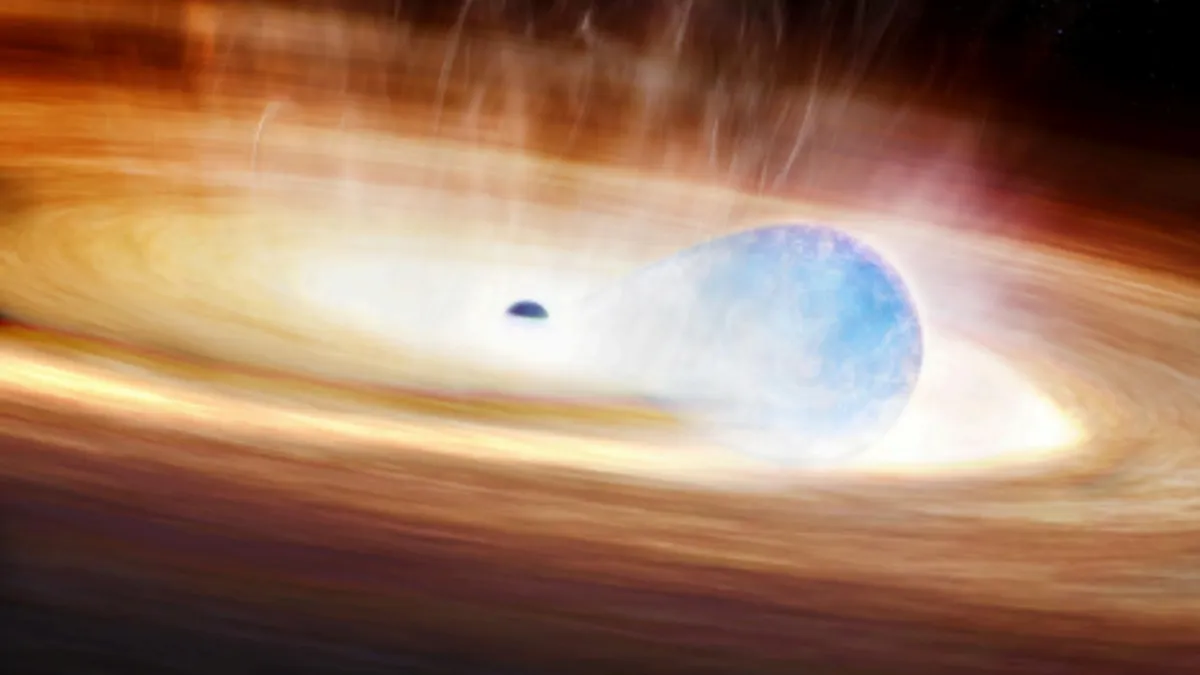
Astronomers have recently made a remarkable discovery that may signify the first known instance of a massive star exploding while interacting with a black hole. This discovery could pave the way for understanding an entirely new class of stellar explosions. The event, designated as SN 2023zkd, was initially observed in July 2023 by the Zwicky Transient Facility located in California.
SN 2023zkd was detected in a galaxy situated about 730 million light-years away, a region characterized by minimal ongoing star formation. The detection was facilitated by a cutting-edge artificial intelligence (AI) system specifically designed to flag unusual cosmic events in real time. Thanks to this early alert, telescopes across the globe and in space were able to commence observations immediately, capturing the event from its earliest stages.
Ashley Villar, an assistant professor of astronomy at Harvard University and a co-author of the study, noted that SN 2023zkd exhibits some of the clearest signs of a massive star interacting with a companion star in the years leading up to the explosion. Villar stated, "We think this might be part of a whole class of hidden explosions that AI will help us discover." Initially, SN 2023zkd appeared to be a typical supernova, characterized by a bright flash that indicates the death of a massive star, followed by a gradual fading over time. However, months later, astronomers observed a significant increase in brightness.
Upon reviewing archival data, researchers discovered that the system had been gradually brightening for approximately 1,500 days—around four years—prior to the explosion. Such an extended pre-explosion phase is rare and suggests that the star was experiencing intense gravitational stress. Researchers propose that the most plausible explanation for this phenomenon is that the star was locked in an orbit with a black hole.
Evidence gleaned from light curves and spectra indicates that the star underwent two significant eruptions in the years leading up to its demise, shedding substantial amounts of gas. The first peak of light from the explosion occurred when the blast wave encountered low-density material, while a second peak, observed months later, was triggered by a sustained collision with a dense, disk-shaped cloud. Over time, the gravitational pull of the black hole may have destabilized the star, leading to its eventual collapse.
Another hypothesis proposed by the team is that the black hole may have destroyed the star before it could naturally explode. In this scenario, the debris from the star would generate the light of the supernova as it collided with the surrounding gas. Regardless of the exact circumstances, the aftermath would likely result in the formation of a single, heavier black hole.
SN 2023zkd stands as the strongest evidence to date that such close interactions between massive stars and black holes can trigger stellar explosions. Alexander Gagliano, the lead author of the study and a researcher at the Institute for Artificial Intelligence and Fundamental Interactions, remarked, "We've known for some time that most massive stars are in binaries, but catching one in the act of exchanging mass shortly before it explodes is incredibly rare."
The findings underscore the crucial role that AI can play in identifying rare cosmic events in real time, allowing for detailed studies. The astronomers also highlighted the potential contributions of upcoming facilities such as the Vera C. Rubin Observatory, which will be able to document the entire southern sky every few nights from its location in the Chilean Andes. With real-time AI detection, the observations from the Rubin Observatory will empower astronomers to identify and study more of these rare and complex events, enhancing our understanding of how massive stars live and die in binary systems.
Gagliano expressed excitement about entering an era where astronomers can automatically capture these rare events as they unfold, rather than only after they have occurred. "That means we can finally start connecting the dots between how a star lives and how it dies, and that's incredibly exciting," he stated. This groundbreaking research is detailed in a paper published in the Astrophysical Journal on August 13.